From Pencils to Pixels: The Evolution of Art Tools in Education
4 April 2025
Art, as a form of expression, has been a crucial part of human culture for thousands of years. From the earliest cave paintings to the digital masterpieces of today, the tools we use to create art have evolved dramatically. In the world of education, this evolution has played a significant role in shaping how students learn, create, and express their creativity.
Think about it for a second. Just a few decades ago, art classes were dominated by pencils, paper, paints, and brushes. Today? Students are just as likely to use digital tablets, styluses, and graphic design software to create their masterpieces.
In this article, we’re going on a journey through time, exploring how art tools have evolved in educational settings—from the humble pencil to the cutting-edge pixel.
![]()
The Pencil: The Classic Tool of Expression
For many of us, our first introduction to art was a simple pencil. There’s something magical about the feel of a pencil in your hand, the way it glides across the paper, leaving behind a trail of creativity.Pencils are one of the oldest and most widely used tools in education. Their simplicity and versatility are unmatched, allowing students to sketch, doodle, write, and erase with ease.
Why Pencils Stood the Test of Time
The pencil's enduring popularity in classrooms is no accident. It’s affordable, accessible, and easy to use for students of all ages. Whether you're sketching a rough draft or fine-tuning a detailed drawing, the pencil is a reliable tool for any budding artist.But pencils aren’t just for beginners. Even professional artists use them for sketching and planning their work. The tactile nature of pencil on paper provides a connection between the artist and their creation that many digital tools can’t replicate.
The Importance of Hand-Eye Coordination
Using traditional tools like pencils also helps students develop important motor skills. Drawing, shading, and erasing require fine control of the hand and wrist, contributing to the development of hand-eye coordination. These skills are essential not just for art, but also for other activities like writing and even playing sports.![]()
Paints and Brushes: Adding Color to the Canvas
As students progress in their artistic journey, they’re often introduced to paints and brushes. Adding color brings a whole new dimension to their creations. Suddenly, a simple sketch can be transformed into a vibrant, eye-catching masterpiece.The Variety of Paint Mediums
There are so many different types of paint—watercolors, acrylics, oil paints, gouache, and more. Each has its own unique properties, and students can experiment with these to learn how different mediums interact with surfaces.For example:
- Watercolors are great for creating soft, translucent effects.
- Acrylics dry quickly and are perfect for layering bold colors.
- Oil paints allow for blending and take longer to dry, giving artists more time to work on their piece.
Encouraging Creativity and Experimentation
Using paints encourages students to think outside the box. Mixing colors, experimenting with brush strokes, and layering textures are all part of the creative process. There’s a certain unpredictability to painting that can lead to happy accidents—sometimes your brush will create a stroke you didn’t intend, but it turns out better than you could’ve imagined.![]()
The Shift to Digital: From Traditional Canvases to Screens
Fast forward to the 21st century, and we see a monumental shift in how art is created in educational settings. With the rise of technology, students now have access to digital tools that allow them to create art in ways that were unimaginable just a few decades ago.The Introduction of Graphic Design Software
Programs like Adobe Photoshop, Illustrator, and CorelDRAW have revolutionized the world of art. These tools allow students to create, edit, and manipulate images with precision and ease.Digital art tools come with a variety of features, such as:
- Layers: Artists can work on different elements of their piece separately, making it easier to edit and refine.
- Undo/Redo: Made a mistake? No problem. Digital tools let you undo and redo as many times as you like—something you can’t quite do with paints or pencils!
- Infinite Color Palette: Digital programs provide access to millions of colors, allowing for endless creative possibilities.
Drawing Tablets: A Bridge Between Traditional and Digital Art
If you’ve ever watched a professional digital artist at work, you’ve probably noticed they often use a drawing tablet. These tablets, paired with a stylus, mimic the feeling of drawing with a pencil or brush, but the canvas is a digital screen.Drawing tablets bring together the best of both worlds—the tactile experience of traditional art and the precision of digital tools. Students can create detailed illustrations, animations, and designs with incredible accuracy.
The Benefits of Digital Art in Education
Why have digital tools become so popular in art education? There are a few key reasons:1. Accessibility: Many students have access to computers and tablets, making digital art tools more widely available.
2. Collaboration: Digital art makes it easier to collaborate. Students can share their work, get feedback, and work on joint projects using cloud-based platforms.
3. Environmental Impact: Going digital means less paper waste, making it a more environmentally friendly option.
![]()
Hybrid Learning: Combining Traditional and Digital Art
While digital art tools have transformed the way students create, traditional art still has its place. In fact, many educators now embrace a hybrid approach, encouraging students to use both traditional and digital tools in their work.The Best of Both Worlds
By combining traditional and digital art, students can develop a wide range of skills. For example, they might sketch their initial ideas with a pencil, then scan the drawing and refine it using graphic design software. This approach allows students to take advantage of the strengths of both mediums.Fostering Adaptability
In today’s world, being able to work across different platforms and mediums is an invaluable skill. By exposing students to both traditional and digital tools, educators are helping them become more adaptable and versatile—skills that will serve them well in future creative endeavors.The Future of Art Tools in Education: What’s Next?
As technology continues to evolve, so too will the tools available to students in art education. So, what does the future hold?Virtual Reality (VR) and 3D Art
One of the most exciting developments in the world of art education is the rise of virtual reality (VR) and 3D art. Imagine being able to step into your artwork, walk around it, and interact with it in real-time. VR tools like Google Tilt Brush allow artists to create immersive, 3D art that can be viewed and experienced in a whole new way.Artificial Intelligence (AI) in Art Creation
We’re also beginning to see the role of artificial intelligence in art creation. AI-powered tools can assist students in generating new ideas, suggesting color palettes, or even creating entire compositions based on prompts. While some might argue that this takes away from the creative process, others see it as a tool to enhance and inspire new forms of artistic expression.Augmented Reality (AR) in the Classroom
Augmented reality (AR) is another exciting development. Using AR, students can bring their 2D drawings to life, overlaying digital elements onto their physical artwork. This creates a dynamic learning experience, blending the real world with the digital in ways that were previously impossible.
Conclusion: Embrace the Evolution
From simple pencils to advanced digital tablets, the evolution of art tools in education has been nothing short of remarkable. Each tool has its own strengths, and each plays a role in helping students unlock their creative potential.While technology has brought new opportunities, traditional tools still have their place in the classroom. The key is to find a balance, allowing students to explore both worlds and discover what works best for them.
So, whether you’re a fan of the classic pencil or you prefer working with pixels, one thing is clear: the future of art education is bright, and the possibilities are endless.
all images in this post were generated using AI tools
Category:
Art EducationAuthor:

Olivia Chapman
Discussion
rate this article
7 comments
Micah Rodriguez
This insightful article brilliantly captures the transformative journey of art tools in education. It emphasizes how the shift from traditional mediums to digital technologies enhances creativity and accessibility, equipping students with essential skills for the future.
May 1, 2025 at 7:00 PM

Olivia Chapman
Thank you for your thoughtful feedback! I'm glad you found the article highlights the positive impact of digital tools on creativity and accessibility in education.
Winter Reyes
This article insightfully explores the transformative journey of art tools in education, highlighting how advancements from traditional pencils to digital platforms have revolutionized creativity and learning, enhancing student engagement and broadening artistic expression in the modern classroom.
April 25, 2025 at 4:41 AM

Olivia Chapman
Thank you for your thoughtful comment! I'm glad you found the article insightful and relevant to the evolving landscape of art education.
Willow McCabe
The journey from pencils to pixels reflects not just a shift in tools, but a transformation in creativity and access. Embracing digital mediums in education invites diverse expressions of artistry, challenging traditional boundaries and redefining what it means to learn and create.
April 15, 2025 at 8:51 PM

Olivia Chapman
Thank you for your insightful comment! I completely agree that the shift to digital tools has not only expanded creative possibilities but also transformed how we engage with art in education.
Carmen Sullivan
Embracing the transition from pencils to pixels empowers both educators and students to explore creativity in limitless ways. This evolution not only enhances artistic expression but also prepares learners for a future where innovation and technology intersect. Let’s celebrate this transformative journey!
April 15, 2025 at 4:05 AM

Olivia Chapman
Thank you for your insightful comment! I completely agree—embracing digital tools truly unlocks new creative possibilities for both educators and students, shaping a vibrant future in art education.
Yolanda Gates
What a delightful journey through the evolution of art tools in education! It's inspiring to see how creativity adapts and flourishes from traditional pencils to modern pixels. Each era brings new opportunities for expression, making learning more vibrant and engaging for students everywhere. Keep shining! 🌟🎨
April 9, 2025 at 7:29 PM

Olivia Chapman
Thank you for your kind words! I'm glad you enjoyed the exploration of art tools in education and their impact on creativity! 🌟🎨
Damon McKay
What a delightful journey through art tools! From the classic pencil's simple charm to the vibrant world of pixels, it's amazing how creativity has evolved. Just imagine Picasso with a stylus! Let’s embrace both traditions and innovations, ensuring every budding artist feels inspired to create, no matter the medium! 🎨✨
April 6, 2025 at 4:47 AM

Olivia Chapman
Thank you for your insightful comment! Embracing both traditional and digital art tools truly enhances creativity and inspires the next generation of artists. 🎨✨
Solara Wright
This article beautifully captures the transformative journey of art tools in education. It’s inspiring to see how technology enhances creativity while preserving the timeless essence of traditional methods. Great insights!
April 4, 2025 at 4:02 AM

Olivia Chapman
Thank you for your kind words! I’m glad you found the article inspiring and appreciate the balance between technology and traditional methods in art education.
MORE POSTS

Differentiating Instruction for Kinesthetic Learners
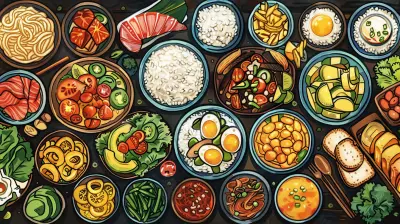
The Role of Food in Teaching Cultural Awareness
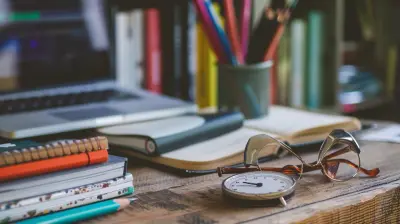
How to Incorporate Asynchronous Activities in a Virtual Classroom
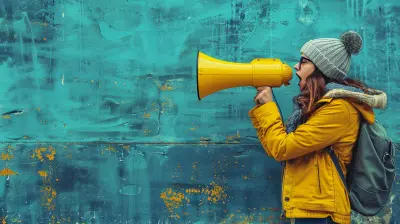
The Power of Storytelling in Persuasion
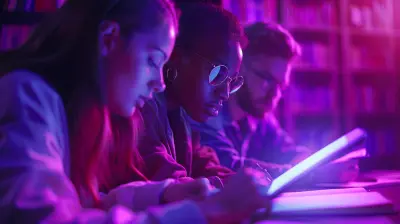
The Value of Study Groups for Collaborative Learning
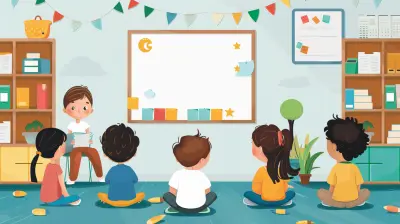
Effective Parent-Teacher Communication Strategies